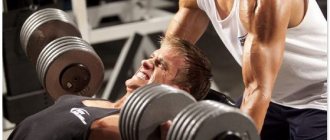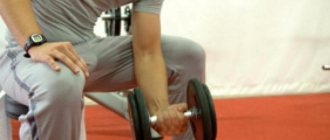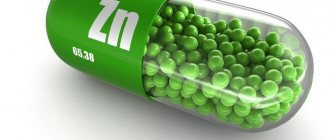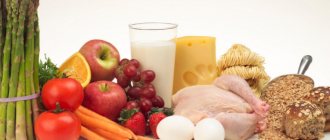5 ways to get rid of swelling January 8, 2013, 00:00 | Natalia Karpova
14 chosen
After a series of festive feasts with an abundance of spicy, fried and salty foods, many often experience discomfort associated with the accumulation of excess fluid in the body. How to get rid of swelling, restore elasticity to the body, and clarity to the shape?
Drink enough water
At first glance, this advice may seem a little strange - after all, swelling is formed precisely from the abundance of fluid in the tissues. However, paradoxically, the less you drink (water), the worse the swelling will be. The thing is, during a period of fluid deficiency, the body tries to stock up on it in all possible ways, including by storing water in tissues and organs. Drink at least 8 glasses of clean water a day to avoid swelling. However, it is better to discuss the “water standards” that are suitable specifically for you with your doctor.
Potassium
Potassium copes excellently with swelling, removing excess fluid from tissues. Therefore, if you want to relieve puffiness, include in your diet foods rich in this microelement - dried apricots, legumes, fresh carrots, cucumbers, parsley, celery, raisins, bananas and green tea.
Salt
Abuse of salt is the root cause of edema, which, in turn, provokes other ailments. First of all, an increase in blood pressure. If you are hypertensive, control the amount of salt in your food. If possible, replace it with lemon juice and natural spices, which will make the food less bland and without adding salt. It is believed that the daily requirement of salt is contained in two slices of black bread.
Physical exercise
A sedentary lifestyle not only contributes to excess weight gain, it also provokes the formation of edema. During the holidays, try to spend more time outdoors - play outdoor games, engage in winter sports, or just take a walk. Oxygen and moderate physical activity activate metabolic processes in the body, promoting the outflow of excess fluid from tissues.
Beauty care
When fighting edema, which can visually (and not only) add several kilograms to you, you should not discount cosmetic body care. Salt body scrubs, contrast showers, as well as light body massage using essential oils or special slim creams have a draining effect.
| Silhouette concentrate Cellipex, Methode Cholley | Body lifting cream Cell Shock, Swiss Line | |
| Scrub with drainage effect Dren, Guam | Drainage serum Slim Effect, Decleor | |
Natalya Karpova , etoya.ru
Carbohydrate loading to speed up metabolism
Fast metabolism is the basis of your physical condition. (here are details on how to speed up your metabolism). Without this, you will not be able to lose weight or gain muscle mass. Typically, to promote metabolism, nutritionists recommend following three simple principles:
- Drink more clean water;
- Take more meals during the day, the portions should be small (more about fractional meals);
- Reduce consumption of fatty foods.
When you're on a diet, things get a little more complicated. Because your diet is strictly limited and often consists of the same foods, your metabolism slows down. Nutritional deficiencies are perceived by your body as severe stress. The body quickly adapts to this and begins to slow down metabolic processes in every possible way. The body simply does not need to quickly absorb and digest food. With a small amount of carbohydrates in the diet, the situation only gets worse.
Let's imagine the following picture: 6 days a week you eat exactly 150 grams of carbohydrates. What will happen to your body when on the seventh day you eat 700 grams of carbohydrates, and some of them will be simple? He will be overjoyed! Exchange processes will proceed much faster. You can't fool the body. He will understand that this is a one-time action. Therefore, it will accumulate energy for future use. And in order to accumulate more, he will absorb the food he consumes in large quantities and at a high speed.
Doesn't muscle tissue break down when you lose weight quickly?
This is one of the most popular fears associated with weight loss, and as is often the case with “sage advice,” this point of view is only partially true.
In fact, it's true: too much of a calorie deficit accelerates muscle loss, which is another explanation why "crash diets" are bad for your health.
But what does it mean to have too much of a calorie deficit?
And is there any difference between trained athletes on a high-protein diet and untrained people who eat too little protein?
The answer to this question was found by researchers from the University of Jyvaskylä (Finland).
During the study, they divided the subjects - international track and field athletes aged 20-35 years with a low percentage of body fat (10% or less) - into two groups:
- Caloric deficit of 300 calories (about 12% below total daily energy expenditure).
- Calorie deficit of 750 calories.
Both groups ate a high-protein diet.
After 4 weeks, the results were surprising: athletes on a 300-calorie energy deficit lost very little fat and muscle mass, while those in the second group (750-calorie deficit) lost an average of about 2 kilograms of fat and very little fat. muscles.
It's important to note, however, that the 750-calorie deficit group was not starved in any way— the participants consumed an average of more than 2,000 calories per day . However, they used a fairly aggressive calorie deficit (around 24%) and the results speak for themselves.
Restricting your food intake a little works well for obese people, but the leaner you become, the greater the energy deficit required to effectively burn fat.
This is why the most beneficial caloric deficit when cutting the body is between 20 and 25%.
Now you can see for yourself that the scales have tipped too much AGAINST “slow drying”:
It is entirely possible to lose significant amounts of fat on a mild calorie deficit, but the entire process will take significantly longer and cause more suffering..
If you are relatively thin/slim, then it is very likely that "slow and steady" will never achieve the desired result and will stop trying out of frustration.
And now the most interesting part:
How to maximize fat loss while cutting without sacrificing muscle or sanity?
How to do this quickly and safely?
To normalize leptin production
Leptin is a hormone that regulates a huge number of digestive processes. In particular, appetite and hunger depend on it. The mechanism of its action is quite complex: it is produced by adipose tissue cells and, by acting on the hypothalamus, blocks the production of a neuropeptide, which creates a feeling of hunger.
If leptin levels are low, you feel hungry. If the amount of carbohydrates is low, leptin levels drop quickly. In order not to constantly overcome hunger and not break down, it is recommended to do carbohydrate loading.
With a one-time large intake of carbohydrates, there will be a surge in leptin. It will decrease gradually, since there is still enough glycogen in the body.
Rule #1: Carbs in Moderation
Drying is always accompanied by incredible stress for the body: the amount of carbohydrates consumed is sharply reduced. But you should not consume carbohydrate-containing foods in large quantities immediately after the end of the process. Thanks to this approach, within a couple of days the muscles will float so that the athlete simply cannot see them. The point here is the ability of carbohydrates to retain fluid in the body and thereby provoke edema.
To prevent the relief from floating, on the first day after drying it is best to take your last dose of BJU and add 20 - 30 grams of complex carbohydrates to it. This can be grain bread, rice bran or long grain rice, legumes, durum pasta, tomatoes, lettuce, figs, dried apricots, nuts, dark chocolate 70%.
At the end of the first day after quitting drying and over the next 2-3 weeks, it is worth increasing your carbohydrate intake by 50 grams per week. You should still give preference to complex carbohydrates.
To reduce ghrelin production
Ghrelin belongs to the group of peptide hormones. In our endocrine system, it is responsible for a large number of metabolic and energy functions. An increased level of ghrelin leads to strong appetite, impaired glucose metabolism and incorrect functioning of the entire gastrointestinal tract, which one would like to avoid during a diet.
The mechanism of action of ghrelin on body weight is complex. Under different circumstances, it can contribute to both the development of anorexia and obesity. Its level increases for two reasons: lack of sleep and low carbohydrate diet. In both cases, this leads to a strong increase in appetite, breakdowns and excess weight gain. Refeed helps reduce its production, and you regain control of your appetite for a few days.
Rule #3: Take vitamins and bifidobacteria
Exhausted by the carbohydrate-free race for relief, the body needs restoration. First of all, you should focus on the intake of nutrients that were excluded from the diet during the drying process. These are groups of vitamins B and E, vitamin D3, trace elements calcium and magnesium. It is best to take a multivitamin complex in a course of 1-2 months.
To avoid problems with digestion and bloating, the exit after drying must be accompanied by the intake of bifidobacteria and enzymes. For the same reason, in the first weeks after ending the carbohydrate-free diet, try to exclude sour fruits from your diet.
If you follow these rules, you should also constantly monitor your psychological state. The process of recovery after drying may be accompanied by aversion to one’s reflection in the mirror. In order not to fall into depression, you need to constantly remind yourself of two things.
Firstly, you can’t get out of drying without absolutely gaining weight. Three to four kilograms will return in any case. Secondly, you have done a tremendous amount of work on yourself, and the quality of your body has already noticeably improved, that is, the goal has been achieved in any case.
Don't miss interesting news and events in the telegram channel: https://tlgg.ru/fitbarnews
For emotional relief
Diet is always stressful for the body. The main source of energy for our life is glucose, to which all consumed carbohydrates, both simple and complex, ultimately break down. Without glucose, it is difficult for not only the muscles to function, but also the brain, which is why a person often begins to “slow down” during a diet. Abundant intake of carbohydrates corrects this, your health improves, your thoughts become clearer, your body becomes ready to work. For normal functioning, the central nervous system also needs glucose. Having received it, you are psychologically unloaded, irritability, despondency and anger disappear.
In addition, eating carbohydrates promotes the production of serotonin. This is why when a person is in a bad mood or depressed, he craves sweets.
Your mood will change
When you eat less food, sleep poorly, do more cardio, and balance everything else in your life, your mood will not suffer. Rest assured, this is completely normal, even if you don't think so.
See also: Health benefits of coconut water
Advice:
Never leave home without all the food you need, rest if possible. Do as much preparation as possible when you feel energized, so that when you are exhausted, most of the work is done.
To replenish glycogen stores
This is the main reason for the popularity of refeeds. The more glycogen in your muscles, the stronger, more resilient and bulkier they are. Glycogen is stored only if there is a sufficient amount of carbohydrates in the diet. If there are no carbohydrates in the diet, the muscles look small and flat.
Glycogen is essential for daily activity. With regular strength and aerobic training, its reserves are spent. Replenishment is facilitated by the subsequent intake of carbohydrates, which is why many nutritionists and fitness experts recommend eating 50-70 grams of simple carbohydrates immediately after exercise. On a low-carb diet, glycogen stores are almost always at zero. The body stores a small amount of it in the liver, leaving the muscles “empty.”
Of course, it is impossible to train fruitfully in such conditions. If you carb-load at least once every week or two, your glycogen stores will be replenished and your next few workouts will be intense. The high glycogen content in the muscles promotes better blood supply, and also increases endurance and strength. Towards the end of the microcycle, glycogen stores are again depleted, and loading should be repeated if necessary.
Loading with carbohydrates after training: the opinion of the pros[edit | edit code]
Source:
"The Mass or the Truth About Nutrition, Supplements and Chemistry in Bodybuilding"
.
Author
: Sergey Antonovich
Publisher
: AS Media Grand, 2012.
Mike Matarazzo
: 30-40 minutes after training, I make sure to eat carbohydrates. Usually this is about 400-450 g of boiled rice or 6-7 bananas. It all depends on the volume of the body: for some, a couple of bananas are enough, but for me it’s only enough for one tooth.”
Milos Sartsev
: “About 20-30 minutes after training, I eat 30-35 grams of carbohydrates. Half are complex, half are simple. For example, oatmeal with raisins or bananas. Complex carbohydrates restore glycogen reserves, and simple carbohydrates quickly enter the muscles.”
At the moment, Milos Sartsev is one of the best bodybuilding coaches in America. Milos puts all his clients on his signature post-workout refueling: a cocktail with whey isolate (50-60 g for men, 25-40 for women), 5 g of creatine, 5-20 g of glutamine and pure dextrose. Milos advises experienced bodybuilders to start with 50 g of dextrose, and then increase this dose to 100 g: “The whole secret of my cocktail is dextrose. It is absorbed almost instantly into the bloodstream after exercise. The blood instantly becomes oversweetened, and the pancreas reacts to this with a powerful release of the hormone insulin. It is known that the main task of insulin is to clear the blood of sugar and thereby protect it from thickening. Where does insulin take the extra sugar? “It will carry you” directly into the muscle cells! Well, along the way, it will capture glutamine, and other amino acids, and creatine. You will get the effect of rapid restoration of strength at the cellular level! Both “building” materials and energy stimulants get inside the muscle cell at once! Moreover, if under normal conditions it is not so easy for insulin to break through the cell membrane, then after training, exhausted muscles absorb insulin from its “luggage” like a 1000-watt vacuum cleaner! At the same time, the mechanism of supercompensation is triggered, when the muscles, as if by inertia, store even more amino acids and glycogen than they stored before. Without such “refueling” I cannot imagine serious training.”
Sartsev warns that the payoff from such a technique is not immediate. However, if you have the character to drink such a cocktail after every workout for a year, you will gain at least 5 kg of mass.
Eddie Robinson
: “For many years now, I have been drinking carbohydrate drinks during workouts to keep up my energy. And after training, after 30-40 minutes, I eat 400-450 g of oatmeal or rice.”
Denis Newman
: “I like to mix things up! After training, I can eat a plate of spaghetti with seafood sauce, or pasta with broccoli and chicken, or rice with soy sauce (if I don't watch the amount of salt). Another source of carbohydrates is fruit, usually apples, oranges or watermelon. I eat about 30 minutes after training, and if I trained my legs, after an hour.”
How to properly carbohydrate load?
To get the most out of a refeed, you need to prepare your body for it. A day or two before, you should completely remove carbohydrates from your diet and do intense cardio training. This way you are guaranteed to burn the remaining glycogen in the muscles and liver. This technique is called a carbohydrate hole. It is often used by bodybuilders, powerlifters and crossfit athletes before competitions in order to have less weight during the weigh-in procedure, but to be fully armed at the competitions themselves.
Let's come up with a list of foods that are best for carbohydrate loading. The quality of carbohydrates is of fundamental importance. The bulk (70-80%) should be complex carbohydrates with a low glycemic index. First of all, these are oatmeal, buckwheat, brown rice, durum wheat pasta and other cereals. They do not cause a strong spike in insulin, but they give the body energy for several hours. You need to be careful with simple carbohydrates. No need to overdo it. You should also avoid foods that contain a lot of fat: chocolate bars, donuts, cakes, ice cream, etc. There is nothing healthy in these products, it's just a combination of sugar, trans fats and preservatives. Their glycemic index is too high. Sudden increases in insulin levels in the blood will cause water to be retained under the skin, resulting in swelling and fever.
If you want something sweet, it is best to use dried fruits: raisins, dried apricots, prunes and others. Unlike confectionery products, dried fruits are rich in fructose. This carbohydrate is better stored in the form of glycogen, and also contains a large amount of vitamins and other useful microelements.
It is better not to eat protein food at all or minimize it on the day of loading. There is no need to overload the gastrointestinal tract. In one day, your muscles will not burn out from catabolism, especially since you will get enough amino acids from plant foods. Fats in the diet should also be kept to a minimum, since fatty foods dull your appetite and you will not be able to carry out a full workout.
If your weight is 80-90 kg, then the amount of food you should eat during carbohydrate loading will be quite large. Do everything to make your digestive system comfortable. Load up on fiber-rich vegetables to improve digestion. Drink more pure water to avoid the feeling of heaviness in your stomach. If necessary, use digestive enzymes after meals.
How to quickly lose fat but maintain muscle and strength
An effective body drying regime includes several key points. If you follow the following plan, you can lose about 400-500 grams of body fat per week, even if your starting body fat percentage is low. At the same time, the feeling of hunger is usually minimal, and the overall energy level decreases slightly.
What does the mode consist of:
An aggressive (but not reckless) calorie deficit of 20 to 25%
As in the Finnish study above, when cutting, reduce your calorie intake to about 75-80% of your daily energy expenditure and you will quickly notice a decrease in fat without noticeable loss of muscle mass.
If you're not sure how to calculate a calorie deficit of 20-25%, a calorie expenditure calculator will help simplify your calculations.
Diet with plenty of protein and carbohydrates
While scientists are still searching for the “ideal diet,” one thing we do know is that it will include eating plenty of protein every day.
Numerous studies confirm that high-protein diets are superior to low-protein diets in every way. This is especially important when you are restricting your calorie intake for weight loss, as adequate protein plays an important role in maintaining muscle mass.
To maintain muscles during the cutting period, you need to consume 2.3-2.6 grams of protein per kilogram of body weight.
It is quite difficult to provide this amount of protein through food, so experienced athletes resort to taking whey protein.
These days, many people know that a high-protein diet is superior to a low-protein diet, but not everyone understands why a high-carb diet is so much better than a low-carb diet when it comes to restricting calories and losing weight.
A few facts about carbohydrates while drying the body:
- A high-carbohydrate diet results in less stress and fatigue than a carbohydrate-restricted diet.
- A low-carb diet does not lead to greater fat loss than a high-carb diet.
- Eating high in carbohydrates while cutting the body better supports performance and helps maintain muscle mass.
- The risk of overeating (consuming extra calories) is higher on a low-carb diet than on a high-carb diet.
This is a rather surprising recommendation for many people, but if you usually eat a low-carb diet when you want to lose excess fat, try a higher carbohydrate diet next time (about 40% of all calories eaten) and you will be pleasantly surprised at how much The whole process of drying your body will become easier and more enjoyable.
Using dietary supplements while drying the body
Most likely, you are skeptical about dietary supplements...
And this is not surprising. The sports nutrition industry is rife with scams, and most advertised capsules and powders are more or less useless.
However, natural substances that can speed up fat loss and promote muscle growth do exist.
A good example of a sports nutrition for muscle gain is creatine, and there are several tried and tested supplements that boost fat loss. They have been known for decades and in numerous experiments it has been proven that the use of green tea extract, caffeine, yohimbine and some other drugs help speed up the drying process of the body.
In this sense, the most famous drug is called clenbuterol. But, firstly, its use is unsafe for health and, in addition, it is prohibited by the International Olympic Committee (IOC).
Workout
Exercising with heavy weights will not only help you maintain muscle mass while cutting, but it will also allow you to burn more fat.
Scientists at the Democritus University of Thrace (Greece) found that men who trained with heavy weights (80-85% of their one-repetition maximum, or 1RM) over the next 3 days had a significantly increased metabolic rate compared to those who trained with heavier weights. light weights (45-65% of their 1RM). And a faster metabolism means that even at rest (when a person is doing nothing - resting or sleeping) additional hundreds of calories are burned.
So while cutting your body, train with heavy weights if you want to increase your metabolic rate and, accordingly, speed up fat burning.
And for an extra bonus, focus on compound exercises like squats and deadlifts, because these are the ones that provide the most post-workout calorie burn.
Target
Any physical activity requires carbohydrates for fuel. For most recreational activities, your body uses existing energy reserves. But when you do long, intense workouts, your body needs extra energy. The goal of carb loading is to provide energy to increase your endurance so you can complete your workout set with less fatigue. This, in turn, will affect the size of the glycogen store and increase strength endurance in general.











